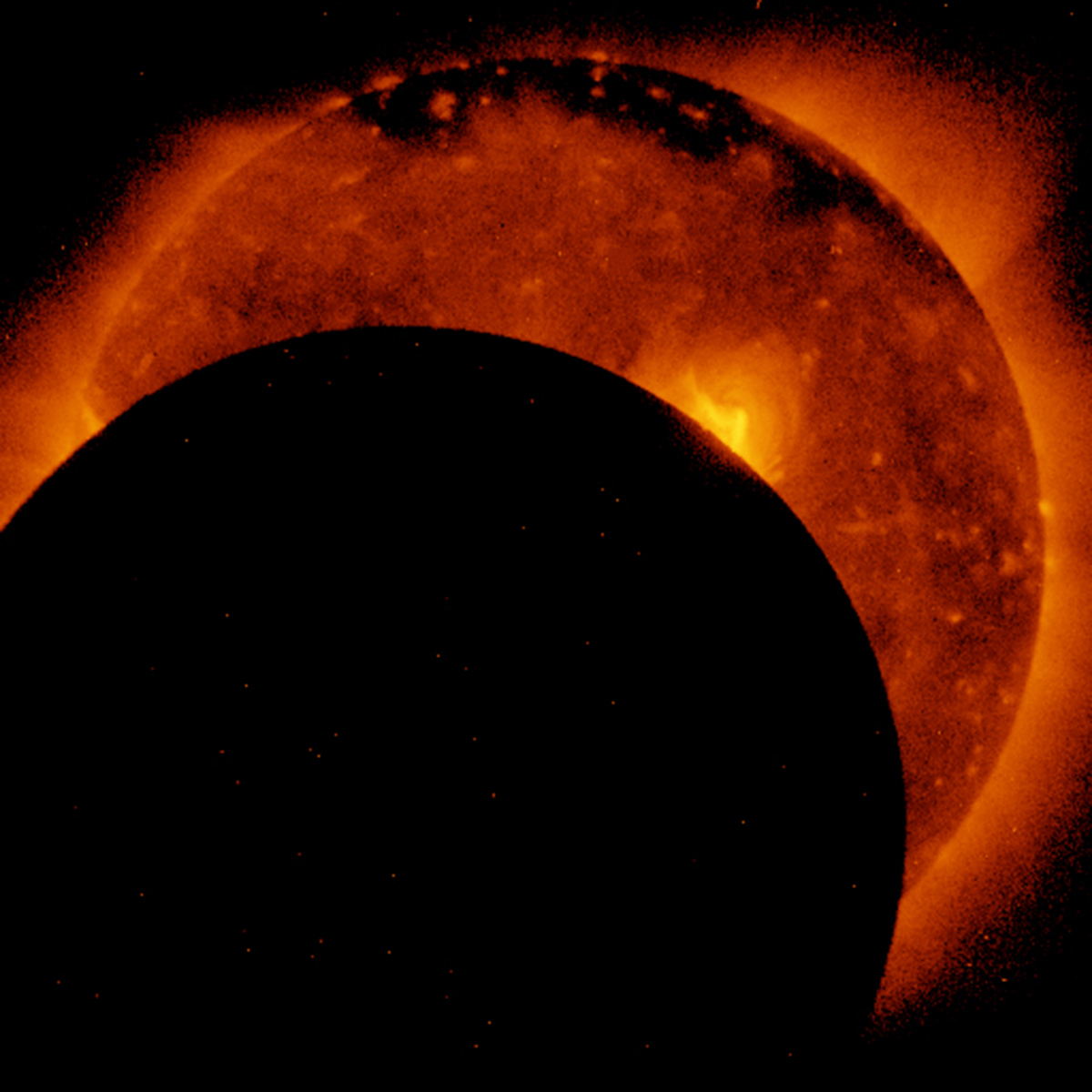See NASA Satellites' View of Great American Solar Eclipse (Video)
Many NASA spacecraft got a good look at the long-awaited Great American Solar Eclipse, as a striking new video shows.
The 75-second video combines imagery from a variety of NASA Earth-observing and sun-watching missions, including the Solar Dynamics Observatory (SDO) and Lunar Reconnaissance Orbiter (LRO), as well as from astronauts aboard the International Space Station (ISS).
The Aug. 21 eclipse cut a dark swath from Oregon to South Carolina, marking the first time a total solar eclipse had gone coast-to-coast across the American mainland in 99 years. No total solar eclipse had even touched the Lower 48 states since 1979.
Skywatchers had therefore been looking forward to the event for years. Scientists were excited, too; total eclipses give them the rare chance to observe the sun's wispy outer atmosphere, known as the corona, which is usually drowned out by our star's glare.

Observations made during total solar eclipses could help shed light on why the corona is so much hotter than the solar surface, researchers have said. (The sun's surface is about 10,000 degrees Fahrenheit, or 5,600 degrees Celsius; the corona clocks in at several million degrees F.)
In addition to the SDO, LRO and ISS imagery, the new NASA video highlights footage captured by the agency's Terra satellite and Interface Region Imaging Spectrograph spacecraft; the Solar and Heliospheric Observatory, a joint effort of the European Space Agency and NASA; the Hinode satellite, a collaboration between the Japan Aerospace Exploration Agency and NASA; and the Suomi NPP spacecraft, the Geostationary Operational Environmental Satellite (GOES) and the Deep Space Climate Observatory (DSCOVR), which are all joint missions of the U.S. National Oceanic and Atmospheric Administration and NASA.
The next total solar eclipse observable from the contiguous 48 states will occur in April 2024.
Get the Space.com Newsletter
Breaking space news, the latest updates on rocket launches, skywatching events and more!
Follow Mike Wall on Twitter @michaeldwall and Google+. Follow us @Spacedotcom, Facebook or Google+. Originally published on Space.com.
Join our Space Forums to keep talking space on the latest missions, night sky and more! And if you have a news tip, correction or comment, let us know at: community@space.com.

Michael Wall is a Senior Space Writer with Space.com and joined the team in 2010. He primarily covers exoplanets, spaceflight and military space, but has been known to dabble in the space art beat. His book about the search for alien life, "Out There," was published on Nov. 13, 2018. Before becoming a science writer, Michael worked as a herpetologist and wildlife biologist. He has a Ph.D. in evolutionary biology from the University of Sydney, Australia, a bachelor's degree from the University of Arizona, and a graduate certificate in science writing from the University of California, Santa Cruz. To find out what his latest project is, you can follow Michael on Twitter.









